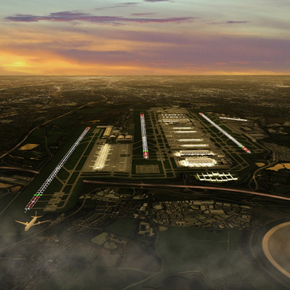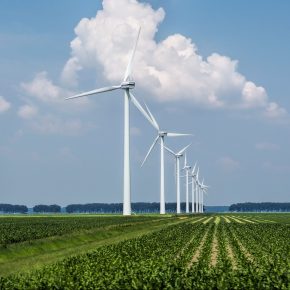
Gambling our future on airport expansion
Guest blog: Professor Alice Larkin, Tyndall Centre for Climate Change Research, School of Mechanical, Aerospace and Civil Engineering, University of Manchester.
The Paris Agreement is due to come into force on 4th November 2016, with a new ambitious goal of “holding the increase in the global average temperature to well below 2°C above pre-industrial levels and pursuing efforts to limit the temperature increase to 1.5°C …”.
 The nuanced language of “well below” accompanying the 2°C goal identifies strengthened ambition, and deserves a high profile. It defines a more constrained available carbon budget, than previous Accords and Protocols.
The nuanced language of “well below” accompanying the 2°C goal identifies strengthened ambition, and deserves a high profile. It defines a more constrained available carbon budget, than previous Accords and Protocols.
So what is the importance of the Paris Agreement’s new goals for airport expansion? Well once a constrained carbon budget is defined, modellers can develop a variety of future scenarios for global energy systems that remain ‘in budget’.
These would include obvious elements such as an increase in renewable and very low carbon energy supply-side options and big changes to the levels and patterns of energy use, storage, and energy efficiency.
However, studies almost universally also include highly optimistic assumptions about a new suite of ‘negative emissions technologies’ (NETs) offering a ‘carbon sink’ to balance carbon sources in the second half of the century.
This balancing is considered necessary from a mathematical perspective because some sectors are assumed to be too difficult to decarbonise in an appropriate timescale – air travel is one such sector. Yet recent attention drawn to a huge reliance on NETs highlights the significant risks posed assuming these interventions can be deployed at the necessary rate and scale. 
Aircraft are extremely difficult to decarbonise, which is why research illustrates that demand-side measures have a key role to play in minimising aviation CO2. If NETs prove to offer only marginal cuts to CO2 in future, the damage will have been done.
Short-term measures to tackle rising CO2 through minimising the demand for fossil fuels now are essential. A moratorium on airport expansion is one such mechanism, yet the opposite decision has just been made in relation to Heathrow expansion.
The consequences of which will have global ramifications in the short-term, enduring well beyond our lifetimes.
Latest news

26th November 2024
Keller Kitchens extends carbon farming collaboration
Since 2021, DKG (parent company of Keller Kitchens and Bruynzeel) and ZLTO (association of farmers and horticulturists in the Dutch provinces Zeeland, North Brabant and South Gelderland) have been working together on a five-year pilot project – ‘Carbon Farming for CO2-storage in farmland’.
Posted in Articles, Building Associations & Institutes, Building Industry News, Building Products & Structures, Building Services, Facility Management & Building Services, Innovations & New Products, Interiors, Kitchens, Restoration & Refurbishment, Site Preparation, Sustainability & Energy Efficiency, Waste Management & Recycling
26th November 2024
Vent-Axia Offers Ventilation Solutions for Landlords to Tackle Condensation and Mould
Leading British ventilation manufacturer Vent-Axia can offer expert advice and a range of ventilation options to help landlords meet new legislation…
Posted in Air Conditioning, Articles, Building Industry News, Building Products & Structures, Building Regulations & Accreditations, Building Services, Damp & Waterproofing, Facility Management & Building Services, Health & Safety, Heating Systems, Controls and Management, Heating, Ventilation and Air Conditioning - HVAC, Retrofit & Renovation
26th November 2024
Glidevale Protect expands its fire rated wall membrane range
Glidevale Protect has strengthened its flame retardant offering with the launch of its Protect FrameSafe 5000 FR external wall membrane designed for open façade cladding applications.
Posted in Articles, Building Industry News, Building Products & Structures, Building Regulations & Accreditations, Building Services, Cladding, Facades, Health & Safety, Innovations & New Products, Membranes, Restoration & Refurbishment, Retrofit & Renovation, Walls
22nd November 2024
Insight Data: Using Marketing Data to Build a Successful Business in 2025
Alex Tremlett, Insight Data’s Commercial Director, discusses the challenges for construction firms in 2025 and shares six strategies for success…
Posted in Articles, Building Industry News, Building Services, Information Technology, news, Research & Materials Testing
 Sign up:
Sign up: